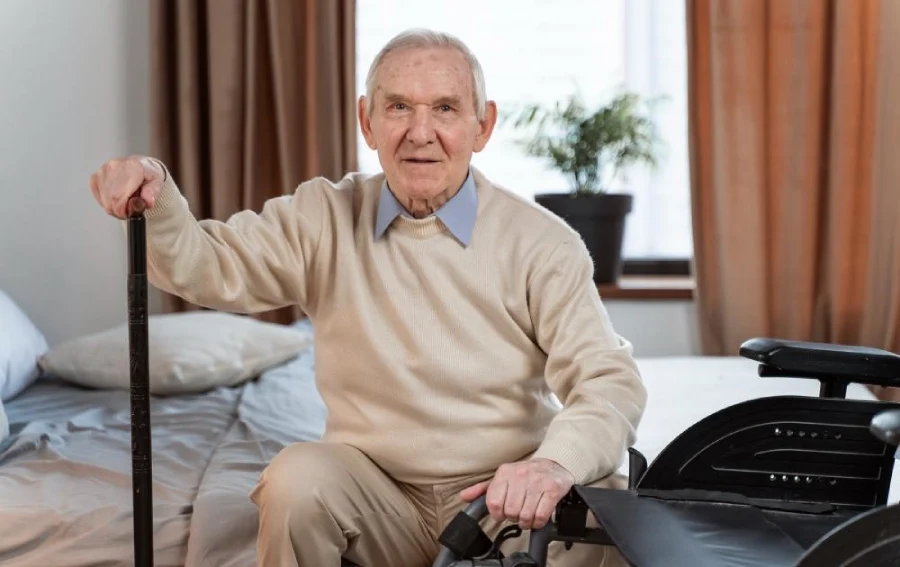9 Assistive Devices for Elderly People to Consider
By TOI Staff
August 15, 2023
Update on : August 15, 2023

The number of elderly people is increasing, leading to a greater demand for creative solutions that improve their quality of life. Assistive devices are vital in promoting independence, safety, and well-being, addressing their unique needs effectively and responsibly. This article reveals nine crucial assistive devices that senior citizens should contemplate to effectively handle day-to-day obstacles with convenience.
Mobility and Accessibility Devices
Mobility Scooters
Mobility scooters have revolutionized the lives of seniors dealing with mobility challenges. These devices offer a newfound sense of independence, enabling individuals to move freely and comfortably in any environment. With a myriad of options to choose from, including large mobility scooters and lightweight travel models, older adults can select the one that best suits their unique requirements. Carefully consider factors such as terrain, distance, and portability when selecting the most suitable aid mobility.
Stairlifts
Stairlifts provide a practical solution to mobility challenges faced by seniors residing in multi-story homes or apartments with staircases. Such devices are specifically designed to ensure safe and effortless transportation of individuals along the stairs. The installation process generally involves attaching a rail to the staircase, allowing the user to smoothly glide up or down while seated comfortably. Consider factors such as staircase design, user comfort, and maintenance requirements before making a stairlift purchase.
Hearing and Vision Enhancement Devices
Hearing Aids
Age-related hearing loss is frequently experienced by older individuals, resulting in challenges with communication and social integration. There are different types of hearing aids available, such as behind-the-ear, in-the-ear, and discreet options. The gear amplifies sounds and improves speech comprehension, allowing seniors to participate in conversations and activities with better clarity. Overcome the initial adjustment period and seek professional advice to fully optimize the advantages of hearing aids.
Magnifiers and Large-Print Devices
Visual impairments can present daily challenges for older individuals. To address this, magnifiers and large-print devices are available to enlarge text and images, thereby improving accessibility. These tools come in various forms, including handheld magnifiers, electronic magnifying glasses, and smartphones with accessibility settings. By incorporating these aids into daily routines, elderly individuals can greatly enhance their reading, writing, and overall visual experience.
Daily Living Assistance Devices
Reacher Grabbers
As individuals age, they may face challenges with independent reaching and grabbing. To address this, reacher grabbers are specifically designed for seniors, extending their reach to access high shelves or pick up items from the floor without exertion. With a variety of options tailored to different needs, seniors can select a reacher grabber that aligns with their preferences and requirements. Learn proper techniques for utilizing these devices to prevent accidents and ensure safety.
Medication Dispensers
Managing medications accurately is vital for older adults, particularly those with multiple prescriptions. Medication dispensers provide an effective solution by organizing and dispensing medications at designated times. These automated systems significantly lower the chances of medication errors and assist seniors in adhering to their treatment plans. When evaluating a dispenser, consider factors such as capacity, scheduling flexibility, and ease of programming.
Safety and Communication Devices
Medical Alert Systems
Emergencies can occur without warning, and older adults might need immediate help. Medical alert systems include wearable devices with buttons that, once pressed, connect users to a monitoring center or emergency contacts. These systems offer reassurance by ensuring prompt assistance in case of accidents or medical emergencies. When selecting a medical alert system, consider features such as fall detection, coverage range, and response time.
Video Calling Devices
Social isolation can negatively impact the mental and emotional well-being of seniors. Video calling devices provide a valuable means to connect with family, friends, and caregivers through virtual face-to-face interactions. Tablets, smartphones, and dedicated video communication devices make video calls easy and intuitive. Encouraging older adults to embrace this technology can support them in maintaining meaningful relationships and staying engaged with their loved ones.
Cognitive Assistance Devices
Memory Aids and Reminder Devices
Cognitive difficulties, such as memory impairment, can have an effect on everyday activities and responsibilities. To assist older adults in staying organized and focused, memory aids and reminder devices are available. These tools can vary from basic notes and alarms to more sophisticated electronic organizers. By integrating such resources into their daily routine, individuals can enhance memory retrieval and optimize cognitive abilities overall.
Conclusion
Assistive devices have revolutionized the lives of older individuals, promoting independence, safety, and engagement. Mobility scooters and stairlifts provide solutions for mobility limitations, while hearing aids and vision enhancement devices address sensory impairments. Reacher grabbers and medication dispensers cater to daily living needs, while medical alert systems and video-calling devices ensure safety and social connection. By exploring and adopting such go-to devices, seniors can embrace a future of ballooned well-being and independence.
Read more: 9 Assistive Devices for Elderly People to Consider















